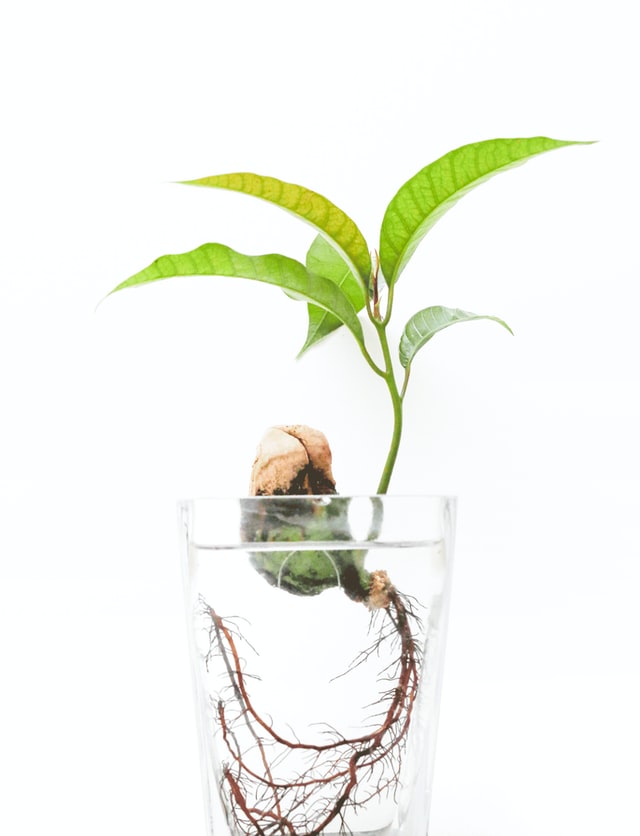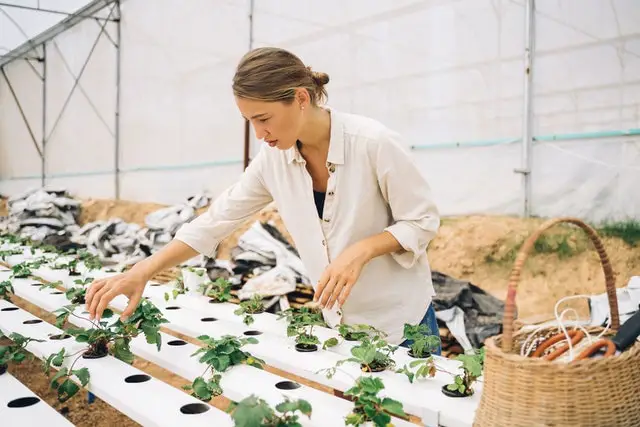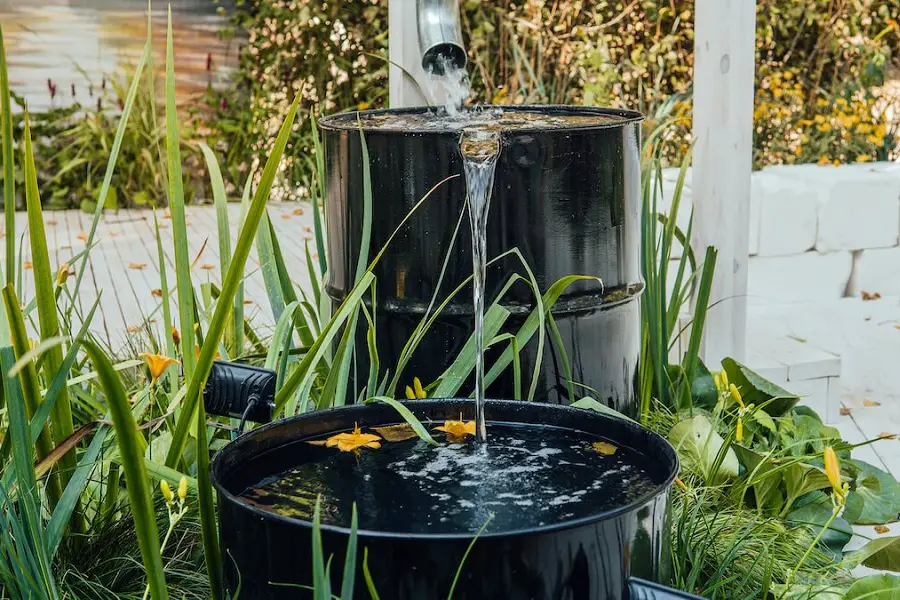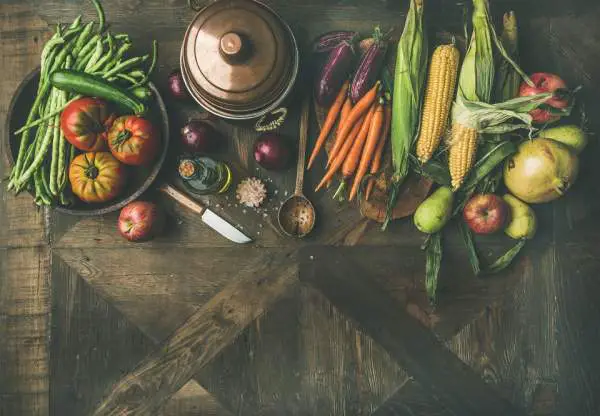Hydroponics has become one of the hottest and most popular ways of growing crops and plants. You do this by using a nutrient-rich solution, rather than the more conventional means of using soil. With these methods, crops can grow all year round, and with the right equipment, they can be grown indoors and are not reliant on natural sunlight.
Hydroponics has been termed the farming of the future, and it does have some great benefits for bringing food to people who would otherwise not be in a position to have such crops.
However, like many things, there are upsides and downsides for anyone who is considering growing hydroponically. If you wish to have healthy crops, these are things that you need to consider because they can help avoid many common mistakes.
Below, we will list the top five advantages and disadvantages of growing hydroponically. We will also address some common questions asked about hydroponic systems and growing without soil.
Hydroponic Gardening Pros
No Soil Required

Crops can be grown where there is limited land, it doesn’t exist, or the growing conditions are far from ideal or contaminated. Because you mix nutrients into the water, all a plant needs after this is something to support them while they grow. Inert growing media such as perlite, coco coir, horticultural grade Rockwool, or Hydrocorn (clay pebbles) are common favorites.
It is the function of these growing mediums to allow proper aeration to plants’ roots while giving support and allowing nutrients to locate the roots of the plants. There are also many types of hydroponic systems, which are suitable for use in different areas or regions, such as wick systems, ebb, and flow (flood and drain), nutrient film technique, continuous drip, and aeroponics systems. When compared, at least 20% less space is required than soil gardening, delivering higher yields.
Uses Less Water than Growing in Soil
This is one of the things which attracts many people to growing hydroponically. Water usage drops by 90% when compared to growing crops in soil. As well as growing in areas where there is little soil, areas such as countries with arid (drought-ravaged) climates such as central Africa can have the ability to grow crops.
Crops or plants in a hydroponic system take water and nutrients as needed, and the run-offs are caught ready for recirculation by means of a high-quality water pump. Because of this, water loss only comes from two areas, evaporation and system leaks. Evaporation will vary depending on the systems implemented, but it is still minimal when compared to conventional farming methods.
All other water usage comes from what the plants need. As it stands, there is an estimation, that agriculture in the US uses 80% of ground and surface water, so it is obvious why hydroponics is an excellent solution in areas with limited water supplies.
Controlled Nutrient Application
Although the growing methods are very different, the principles are the same for both soil gardening and hydroponic gardening when it comes to fertilizing crops. Soil fertilizer can lose its effectiveness when it leaches into the soil, whereas, in a hydroponic system the nutrients circle around the system, and plants take what they need.
With only a few tablespoons of nutrients per gallon of water, these are more cost-effective and are tailored for different stages of growth. Nutrients can differ in the growing phase and the flowering stage. There have been debates about if hydroponics is organic in the past, but now it is possible to purchase organic nutrients, although at a slightly higher cost.
Nutrients come in two varieties, powdered nutrients which is the cheaper option, but takes more work when mixing solutions, or the ready mixed which is more expensive, but they fully dissolve in water and also come with a pH buffer.
Better Growth Rates
There is a slight misconception when it comes to plant harvesting from hydroponic systems. People think hydroponics will produce larger plants that can be obtained when growing in soil. This isn’t the case, but what hydroponics does do is allow plants to reach their full genetic potential. In turn, this does equate to more abundant and healthier crops because there are fewer limiting factors, which reduce a plant’s growth.
Now the grower is in control of the entire growing environment, the grow lights, temperatures, moisture, and nutrients are all directed at delivering the ideal conditions for the plants. Once this happens, and unlike soil, plants no longer need to search for nutrients as they are delivered directly to the roots.
Here is a quick overview of what determines higher yields from hydroponic systems
- Year-round gardening – crop yields can be increased by 2x to 8x when growing year-round and utilizing indoor growing.
- Higher plant density – plants can be grown closer together than in soil, and they can be grown vertically or in layers. Plant density can increase from 4x to 16x in hydroponic systems.
- Sufficient lighting – with full-spectrum grow lights, which deliver an abundance of light, plant yields, can increase by 1x to 2x regardless of what the sun or weather is doing outside.
- Water management – because plants can take what they need, there is no waiting for rainfall and no chance of drought. With correct water management, yields can increase by 1x to 2x.
- Temperatures and CO2 – growers can see an increase in yields of 1x to 2x if the temperatures are kept in the 75F to the 85F range. Additionally to this, with higher CO2 levels, plants can flourish by 1x to 2x in hydroponic systems.
Weeds, Pests, and Insecticides
If you have previously done any type of soil gardening, and have made the switch to hydroponics. When you have a system set up and running, there are a few things you will notice. The first thing you will see is, that you have no weed problems. This not only makes gardening more comfortable by not having to pull them, but weeds are also one of the things, which prevent a plant from reaching its full potential of growth due to stolen nutrients.
Next up are pests, even though pests are less of a problem with hydroponic plants, they are still attracted to hydroponic plants (spider mites). With the right conditions, these can be easier to regulate because you are dealing with a limited environment that you control.
Because there are no weeds and pest numbers are reduced, there are far fewer chemicals in use, and insecticide or herbicide usage can be cut, which is one of the primary benefits of growing hydroponically. This cuts down on cost, work, and plants are healthier as a result.
Cons of Hydroponic Farming

Hydroponics isn’t a perfect form of gardening to any degree, and although you might find the concepts cool, this type of gardening might not be for you. There are advantages, which can outweigh the disadvantages depending on what you’re looking for.
Initial Set Up Costs
Depending on the type and size of the hydroponic system you want, this will have a bearing on your set-up costs for materials. If you are growing indoors, you need to consider ventilation and grow lights as two of the primary factors. Grow lights can soon become expensive, and ventilation will be required because of excess heat.
Compared to soil farming, which only takes a handful of seeds and a shovel to get going. Pumps, reservoirs, nutrients and grow lights, etc. do work out expensive, but this is a one-off cost, and the increase in yields can make this investment worth it.
Time and Commitment
In soil farming, you have some room to maneuver with your plant’s growth. If you forget to water one day, you can quickly water the following day. Weeding can also be left for another day if you don’t feel the urgency to do it.
Luckily, there is no weeding with hydroponics, but if your plants go without water for any reason, you will be left with dead plants. The amount of time you spend tending to your plants can be vastly reduced, but if your engagement with your garden isn’t reliable and punctual, you will fail very quickly. Hydroponics can be easy and demanding at the same time, and you do only get out what you put into it. With plenty of time and commitment, you will reap the benefits.
If you are new to hydroponics, then you need to be ready for some setbacks early on. Trying to keep the right balance all of the time can become stressful, and many farmers, in the beginning, do have crops, which are unsuccessful.
Water-Borne Diseases
Soil-borne pests are eliminated in hydroponic systems, but this doesn’t mean there are no pests or diseases present. This is very far from the truth because there are pests and fungi, which spread through water. To help prevent this, there is a need for an additional filtration system and thorough cleaning of all the components in the system.
If untreated, the generated moisture and heat in your irrigation system is the perfect place for water mold to develop (Pythium and Phytophthora). These pass around the system due to circulating water, and it can take as little as 20-hours for the entire system to become infected. Hydroponics uses a sterile environment, and keeping it this way with regular cleaning can help to combat these fungi, which lead to invasive root rot.
System Failures
First up, water and electricity don’t mix very well, so you need to take precautions to make sure you have no vulnerable areas where the two can meet. In addition to this, power outages can be a nightmare for hydroponic growers, almost all hydroponic systems rely on electricity at some stage. The levels of reliance on electricity can increase to full automation of systems for watering, lighting, and to automatic windows in greenhouses when it gets too hot.
Although these can be for the more serious grower, the impact of a power outage is the same for anyone unless there are standby generators in place. A hobby or home grower won’t go to the added expense of generators and backup batteries initially, but as soon as you have a power out, you can quickly see how vulnerable a hydroponic system is. A full crop can wither and die within a few hours as soon as these electronic items are not working for an extended period.
Grower Experience and Technical Knowledge
Hydroponics is a long-term investment in both a financial and from the grower. The investment from the grower will be repaid through experience and gained knowledge that will be required to maintain efficient systems.
There is little point in deciding to implement a system without understanding what it entails. Many elements can affect success, such as designing a system that is ineffective, to mixing the wrong formulation of nutrients that can set a grower off down a path to failure.
It will be when faced with problems that knowledge can really pay dividends. Not all plants need the same nutrients, so seeing the signs of something being wrong is crucial. Aside from this is the different effect regions can have on systems. Cooler environments, for instance, can have problems with iron deficiency when roots are saturated in water, and with a pH level that is too high.
In this scenario, there is the nutrient mix, and the pH levels to attend to which will need very different problem-solving skills and an understanding of what really makes a hydroponic set-up tick.
Weighing up the Pros and Cons of Hydroponics

When you look at the upsides and downsides of hydroponic systems, the negatives can be more of a quirk than a reason for people not to try it. Systems can cost as much as you want to spend, but on a small scale, you can set up a system for next to nothing. Many individuals, in fact, build their own systems from everyday materials and are highly successful.
Once you find the plants you can grow, and the ones you can’t in hydroponics or in your region, you can tune your system to grow crops that will thrive. If you have an interest, your time and commitment will bring experience and knowledge. This leaves power outages and waterborne disease, both of which you can do something about.
Hydroponics has lots to offer, but at the end of the day, failure or success comes down to the grower, and how much they want their systems to succeed.
Top Questions Asked by Hydroponic Growers
There is no question about it; there are many failed attempts of hydroponic growers. These can have also resulted in plenty of lost investments, so knowing answers to some of the most common questions asked can help to make your hydroponic venture a success rather than it being another statistic.
We learn more from mistakes than we do from things that go right, so by looking at mistakes as a tool for further learning, you can see areas where you can save heartache and financial loss.
How often should I flush the system and change nutrients?
The only way to be entirely sure of nutrient levels is by mixing a new batch. Water is lost through evaporation, and which plants use for nutrition. If water levels drop too quickly, the nutrient solution becomes concentrated and can lead to root burn. The safest way of knowing is to know how many gallons you first added, and then top up with plain water as needed until the total reaches half of your first tankful, this is then a good time to change.
What is the difference between an inorganic fertilizer and one that is organic?
Organic fertilizers come from fish bones, worm castings, and numerous other organic compounds. Inorganic fertilizers (nutrients) are inorganic compounds made through a chemical process.
It is these inorganic fertilizers, which cause individuals to question hydroponic crops as being organic, but as far as your plants go, they have no concern about whether you are using organic or inorganic nutrients.
What is the ideal grow room temperatures?
This is where plant variety and region can play a massive part because not all plants like the same temperatures. More tropical plants like temperatures around 80F while plants like broccoli and kale like lower temperatures of about 60-65F. The most common range of growth is between 70-75F so choosing plants that like these temperatures can give you a head start.
Additionally, to this, it is worth noting insects thrive more over 80F. Growing medium will dry out quickly as you lose more water due to evaporation (nutrients become toxic faster) and there is a reduction of oxygen in the nutrient solution.
I have scum in my tank. How do I get rid of it and prevent it?
The buildup in your tank (nutrient reservoir) might be bacteria, algae, or fungi. These organisms rob reservoirs of oxygen and nutrients, and can also clog pumps and drip feeders if not attended to on a regular basis. The usual cause of this is light entering your reservoir along with high mixture temperatures.
To fix this, you should first make sure your reservoir is covered, and your nutrient mix is running cooler. It might be the whole room needs cooling, or you need a reservoir chiller. The addition of hydrogen peroxide when you change your nutrients can help prevent this buildup, but making sure your system is clean between crops helps the most.
When should I change my HID bulbs?
These come in various strengths and provide a variety of spectrums that meet many needs for indoor gardens. With continual use, the lumens and PAR will drop quickly. You can see the difference in yields from using bulbs that are new, to ones that are between 8-12 months old. It is at this stage your HID bulbs should be changed for new ones.
How do I stop the powdery mildew on my leaves?
This fungal infection is caused by poor ventilation and high humidity. You can prevent this by keeping humidity below 65% and having plenty of air circulation. Ceiling or oscillating fans can make a huge difference. If you already have this on your leaves, you can spray or dust the leaves with Sulphur. Neem oil and pine tree oil are also suitable for preventing and removing powdery mildew.





